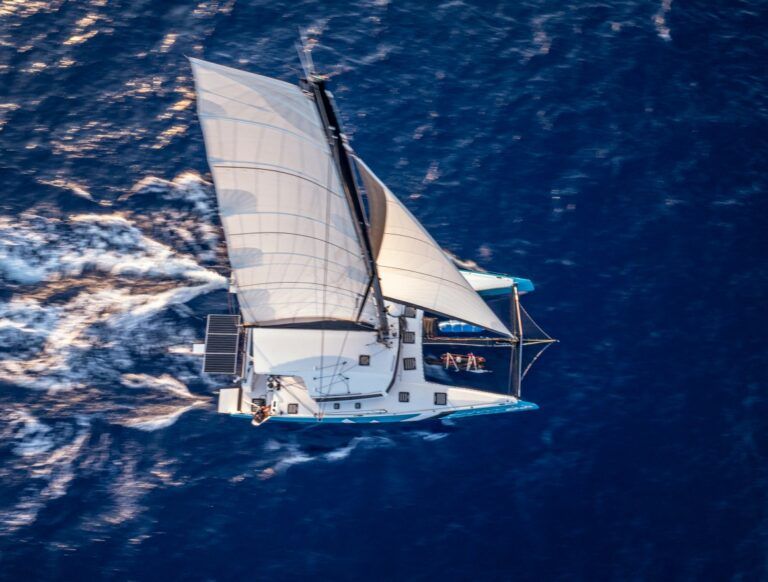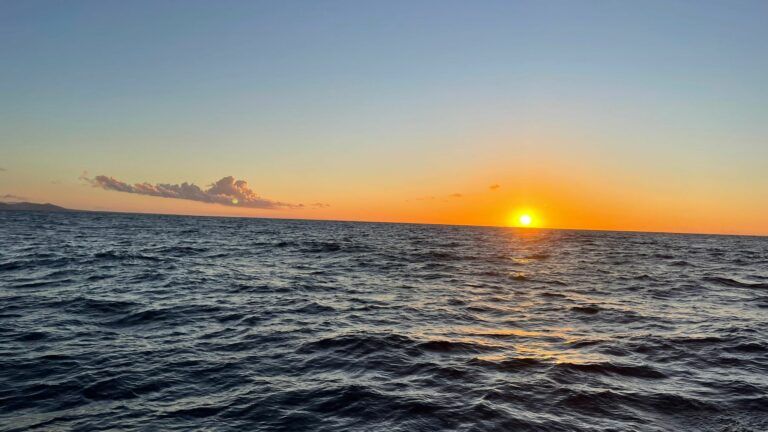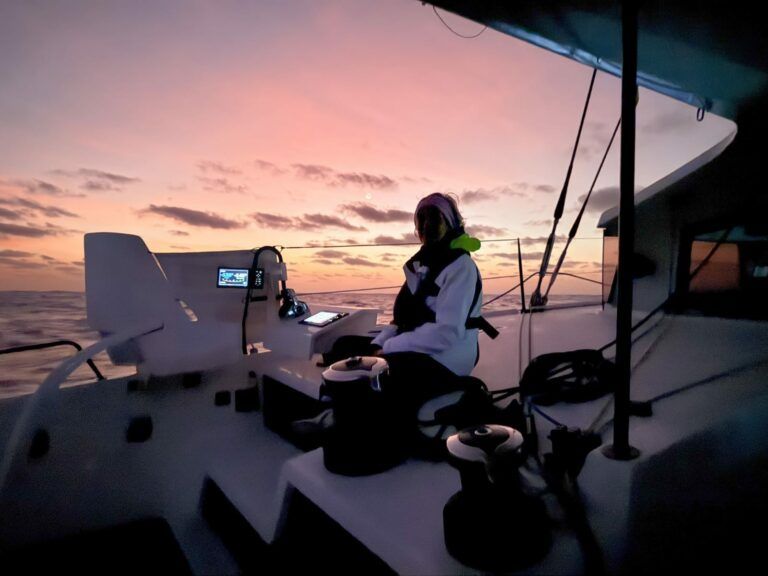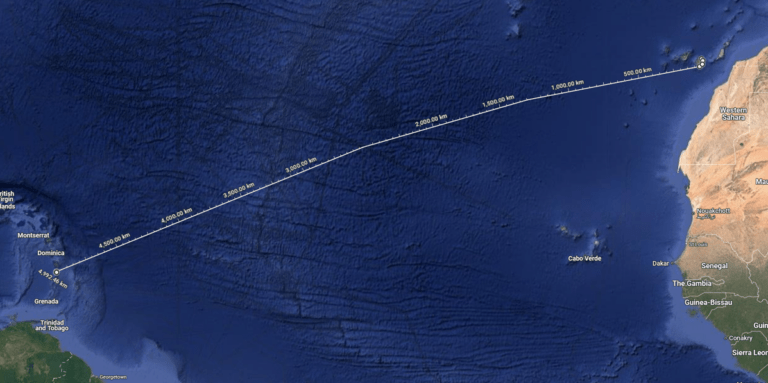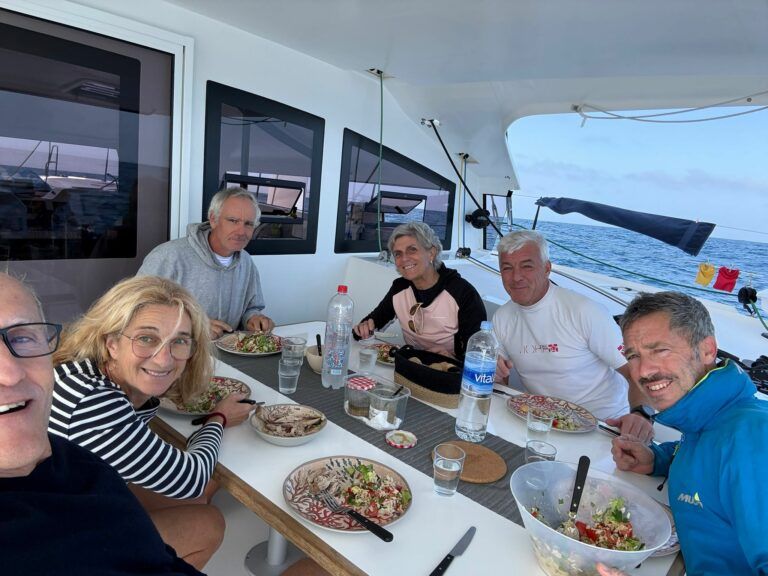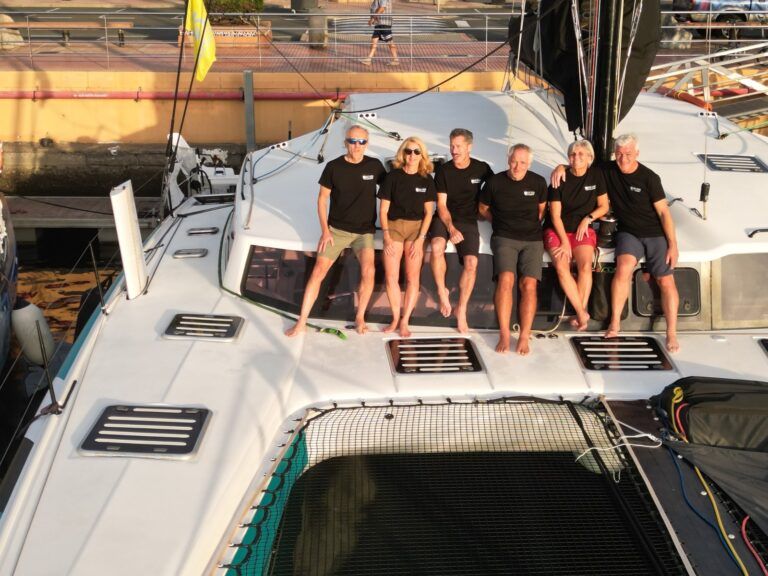Crossing the Atlantic on a professional sailboat
If you’re looking for a safer experience alongside a professional and experienced crew, you can cross the Atlantic aboard a professional sailboat by booking a berth or a cabin.
One of the main advantages of this option is that the voyage is fully organized by the boat’s owner or operating company. You’ll enjoy greater comfort and the presence of a professional crew who ensure your safety while managing the demands of sailing and life at sea – a major plus for peace of mind!
Of course, you can still learn from the crew and take part as much as you wish – both in daily life on board and in sailing maneuvers or navigation watches.
This is exactly the kind of experience we offer, with our professional crew aboard our catamaran!
Crossing the Atlantic on a sail cargo ship
Finally, another option is to cross the Atlantic aboard a sail cargo ship. In this case, you’ll spend several weeks living and sailing on a commercial vessel powered by the wind.
This is made possible by pioneers in wind-powered shipping such as TransOceanic Wind Transport (TOWT), Grain de Sail, Neoline, and Sailcoop. Far from a cruise ship experience, the Neoliner Origin, for example, offers passengers an environmentally friendly Atlantic crossing – while giving them a behind-the-scenes look at the industrial maritime world.
In terms of scale, it’s quite different from our own Avel Vaez: the cargo vessel is 136 meters long – nearly eight times the length of our catamaran!
If you’re thinking of crossing the Atlantic by sail instead of by plane, we can only encourage you. A sailboat will always offer something extra. Whether you’re a sailing enthusiast, a lover of long-distance voyages, or simply curious, you’ll take the time to live, to feel the vastness of the ocean, and to experience that humbling sense of smallness among the elements.

